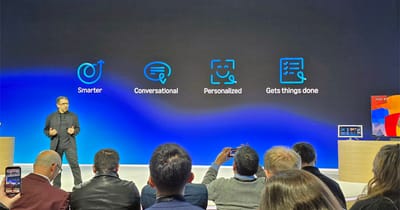
Building AI’s Foundation, One Penguin at a Time

Unlikely as it may seem, the same artificial intelligence model that can dramatically reduce the time it takes researchers and environmentalists to monitor penguin populations may one day help pharmaceutical suppliers develop new drugs far faster and cheaper.
It’s true. In this wide-open-spaces era of artificial intelligence, pioneering AI developers like Gramener, which developed the computer vision model to count penguins, are laying foundational algorithms so that others can hit the ground running. And program’s like Intel’s AI Builders, which brings together ecosystem partners like data analytics firm Gramener to help accelerate AI adoption.
Gramener actually built the camera-trap model for Microsoft’s AI for Earth initiative. Counting penguins – or any species for that matter – in pictures can be a tricky proposition and a time-consuming ordeal. Just finding pictures with penguins in them can take an inordinate amount of time. And once you do, rain and snow, rocks and other objects – even penguins clustered together – can obscure the view and make counting challenging.
Ganes Kesari, Head of Analytics and a Gramener co-founder, told me that the firm’s computer vision models are also being used to identify and monitor other species, like salmon in Washington state and elephants in Africa. But it’s applicable for many other time-consuming counting tasks as well. Like during the drug discovery process, for example, the algorithm could be used to help pathologists count human cells of different shapes at different points in time to gauge effectiveness.
The same cross-application flexibility is true for other Gramener models, Kesari said. Like the firm’s “quality-of-life” application, which it developed to glean population conditions like health, wealth and even the prevalence of indoor plumbing by examining satellite imagery. Others could leverage this predictive AI to assess conditions, which could be very effective for eradicating disease-carrying insects, fighting forest fires and possibly even containing contagious new viruses like the COVID-19 coronavirus now traversing the globe.
For its part, Intel was able to speed training for the computer vision models by two-and-a-half times on second-generation Intel Xeon Scalable processors. That performance boost, achieved with Xeon-tuned open-source PyTorch machine-learning libraries, means it’s now practical to train the counting model without specialized graphics hardware. That could turn out to be a critical option for developers with limited resources to devote to AI – particularly those who already have datacenters full of Xeon Scalable hardware.
Indeed, the optimization could prove to be the difference between training the AI and counting by hand. For whatever it is they want to count.
No spam, no sharing to third party. Only you and me.






